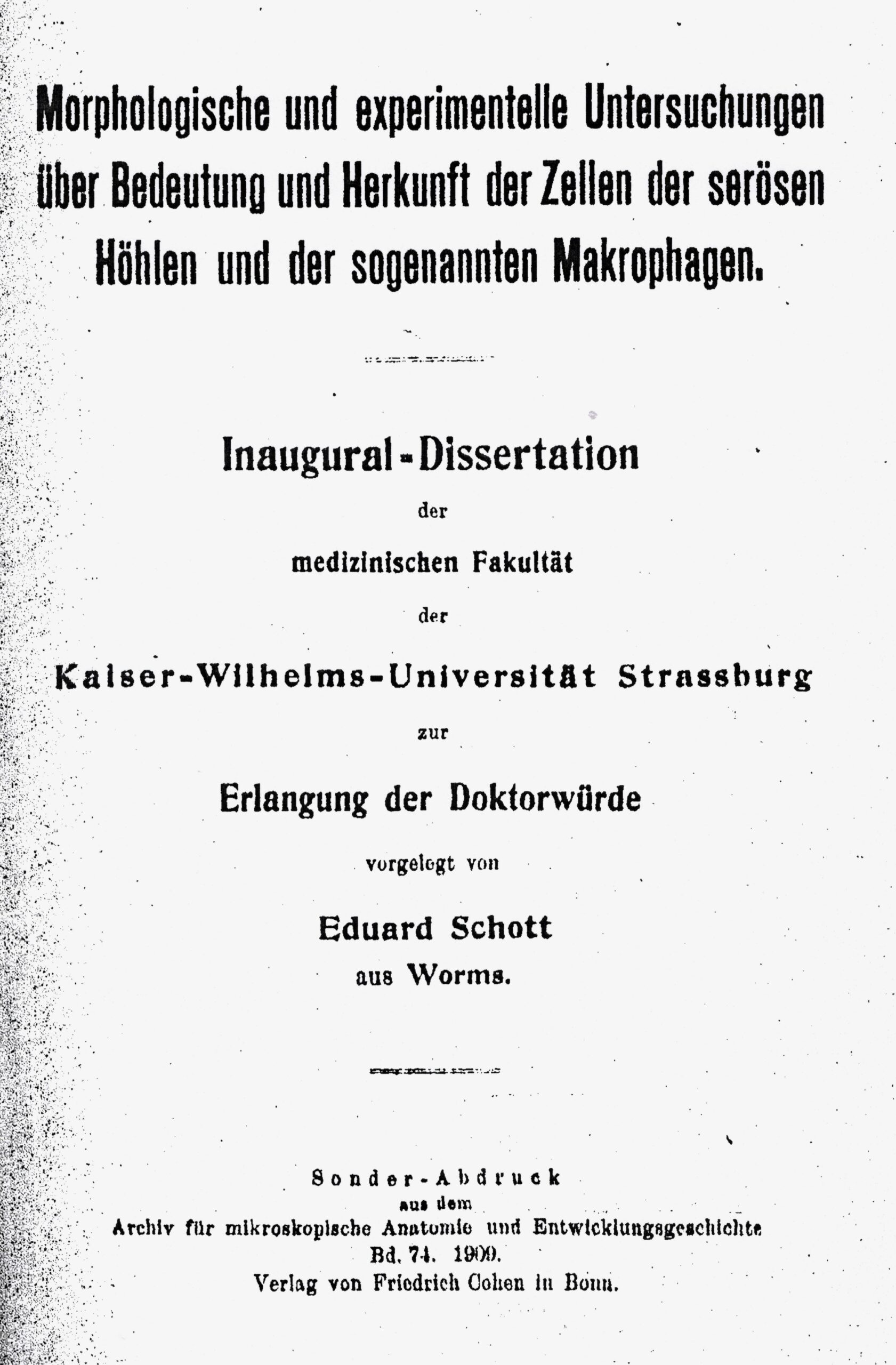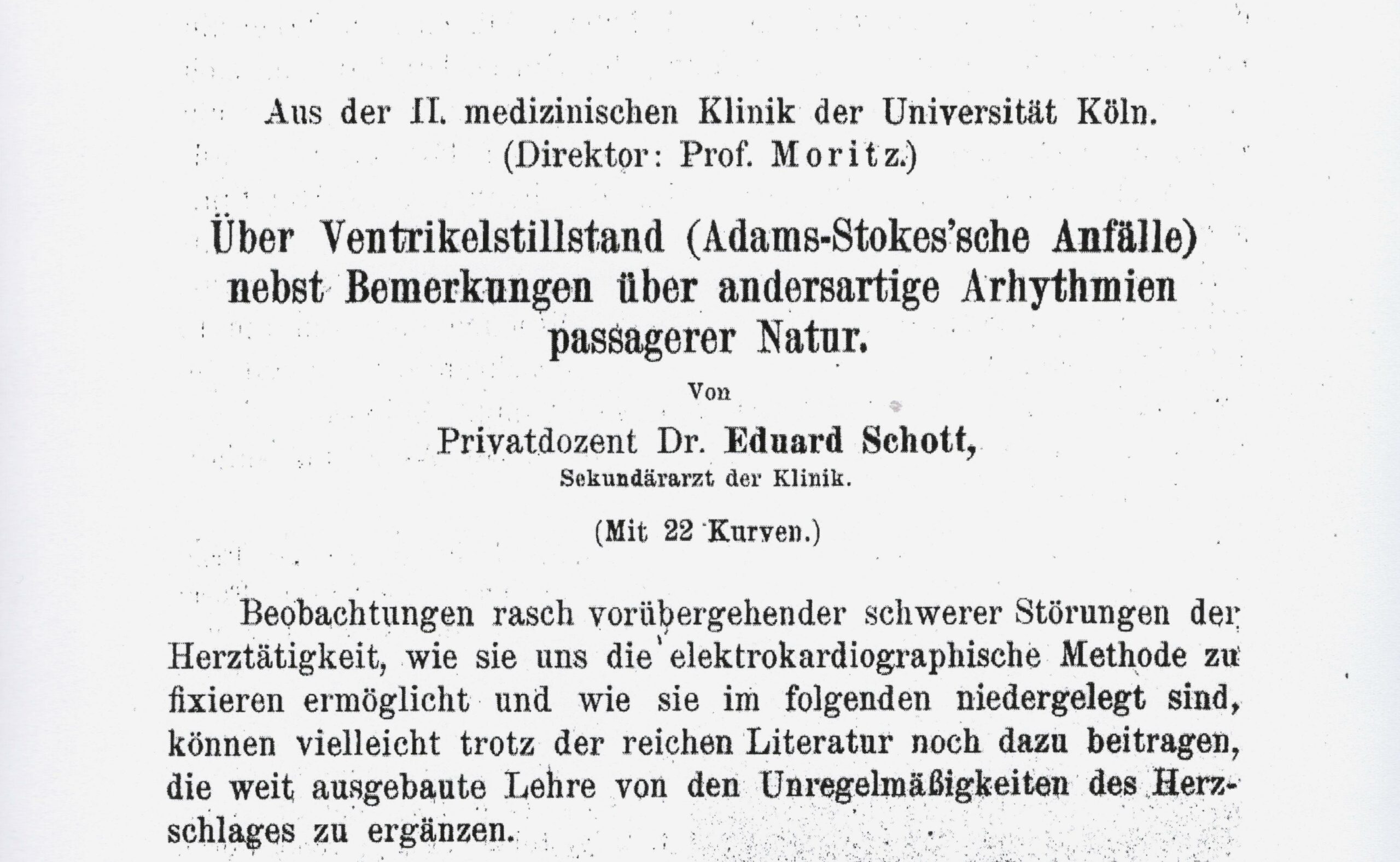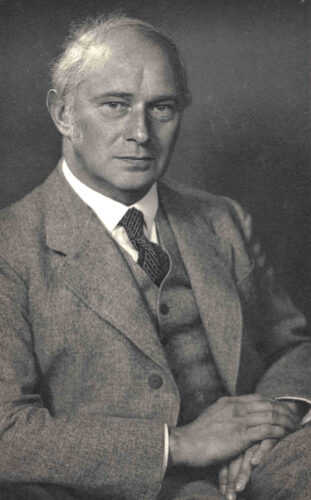Prof. Dr. med. Eduard Franz Schott
- Hagenau, Alsace-Lorraine, 06.05.1886
- Lynn, Essex County, Massachusetts, USA, 08.07.1952
- Member since 1928
- Escaped to the USA in 1939
- Solingen
- Specialist in internal medicine
Eduard Schott was born in Hagenau in Alsace-Lorraine in 1886 as the son of the merchant Moritz Schott and his wife Eugenie Caroline, née Herz. After the early death of his father, his mother moved to her birthplace Worms with her son and daughter in 1887.
Education and Places of Work
After graduating from the Humanistisches Gymnasium (humanistic grammar school) in Worms in 1904, Schott studied medicine in Heidelberg, Munich, Kiel, and Strasbourg. He passed the state examination in Strasbourg in 1909. He received his doctorate with the thesis “Morphologische und experimentelle Untersuchungen über Bedeutung und Herkunft der Zellen der serösen Höhlen und der sogenannten Makrophagen” from the Strasbourg Medical Faculty on 25 August of the same year. The expert opinion for the doctorate was written by the Strasbourg anatomist Gustav Schwalbe. Schott received his licence to practise medicine in 1910.
After working temporarily at the Medical Clinic of the University of Strasbourg, Eduard Schott moved to Cologne in 1911, where he worked as a junior doctor at the Medical Clinic of the Lindenburg Municipal Hospitals together with the clinic director Friedrich Moritz. He actively participated in the First World War in Flanders, among other places. After the war, Schott returned to Friedrich Moritz at the Cologne II Medical University Clinic, where he worked as a senior physician. Schott habilitated in 1919 in the course of the reinstitution of the University of Cologne and the Faculty of Medicine and was appointed professor (extraordinarius) in 1921.
Schott was a broadly trained internist who primarily dealt with heart and lung diseases. The precordial fist thump in the context of resuscitation to terminate malignant arrhythmias can be traced back to him.
Eduard Schott took over as head physician of the Medical Clinic at the Solingen Municipal Hospitals in 1927.
1933
Schott was relieved of his position as head physician at the Solingen municipal hospital on 4 December 1933, due to the “Gesetz Zur Wiederherstellung des Berufsbeamtentum” (Law on the Restoration of the Professional Civil Service) of 7 April 1933 (§ 3, “non-Aryan descent”) and demoted to senior physician. He was forced into retirement in 1935 and could only work in private practice in Solingen thereafter.
Eduard Schott was exposed to open anti-Semitic attacks on several occasions. The Schott family’s Solingen home was vandalised by members of the SA during the November pogrom in 1938. Schott was taken into so-called “protective custody” in the aftermath of the pogrom.
Escape to the USA in May 1939
Eduard Schott left Hamburg for the USA aboard the President Roosevelt on 11 May 1939, arriving in New York on 20 May 1939. Schott’s wife Jenny Juliane, née Gumprecht, initially stayed at her parents’ in Weimar with their four children. Her father, the physician Ferdinand Adolph Gumprecht, worked as a ministerial advisor in Weimar. She was forced to divorce her husband under pressure from the Nazi authorities in September 1942. The eldest daughter, Ilse Schott, was able to join her father in the USA in 1940. The three other children and his wife followed Eduard Schott and his daughter to the USA after the Second World War in 1946 and 1947, respectively.
Schott succeeded in starting a small private practice in Lynn, Essex County, Massachusetts, near Boston, in the USA. Schott’s ability to work had been severely impaired by a bout of illness in 1944.
Eduard Schott died in Lynn, Massachusetts in July 1952 at the age of 66. His gravesite is located at Pine Grove Cemetery in Lynn.
Thanks to the initiative and research of the doctors Dr Heinz Voigt and Dr Martin Müller in Solingen, a memorial plaque commemorating Eduard F. Schott was installed at the Solingen hospital in 2017. A “Stolperstein” (stumbling stone) was laid for Eduard Schott in Solingen in 2018. Schott’s son, Francis Schott, who died in the USA in 2020, published his memoirs of persecution during the Nazi era in 1998 (From Holocaust to freedom: a life). Francis Schott impressively recalled the November pogrom of 1938 in a guest article for a Solingen newspaper in November 2018.
Acknowledgements
We are very grateful to the doctors Dr Heinz Voigt and Dr Martin Müller, Solingen, for providing important information on Eduard Schott’s biography and for kindly letting us have the portrait photo.
Sources and Further Reading
Sources


